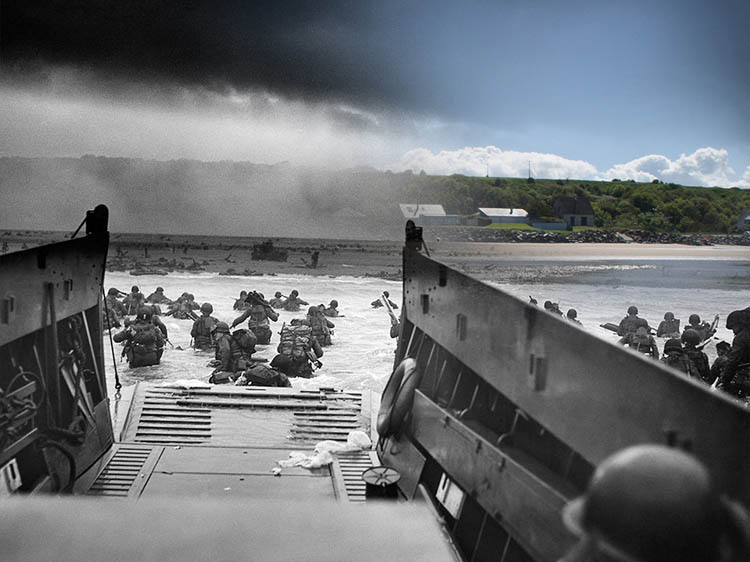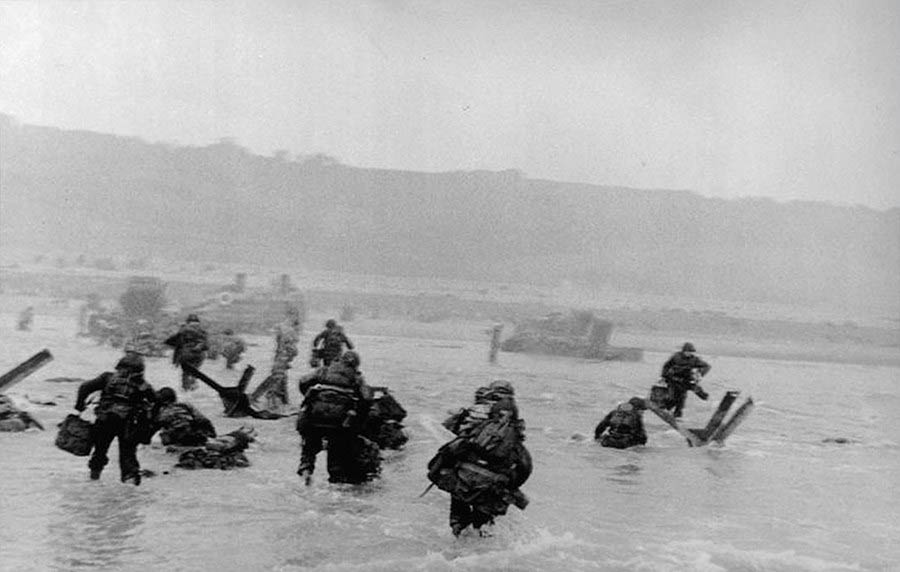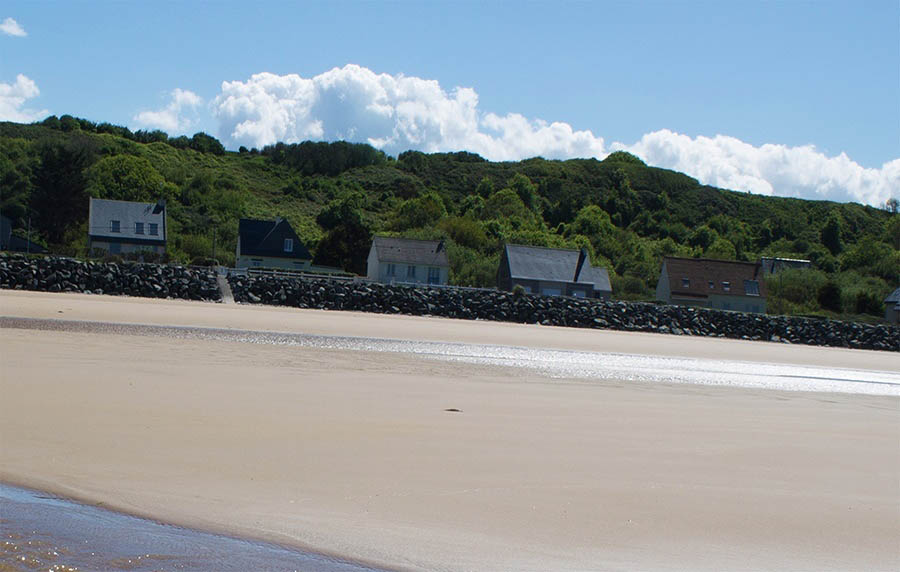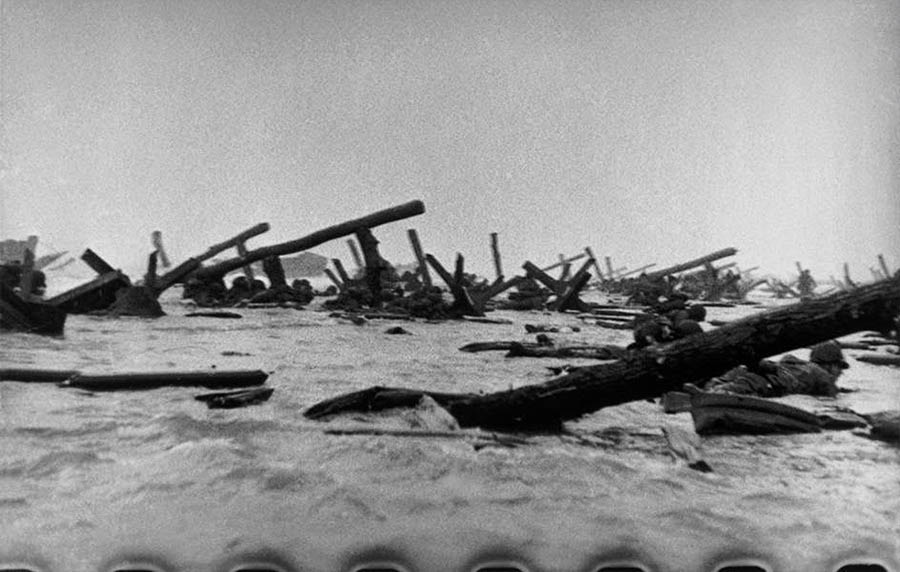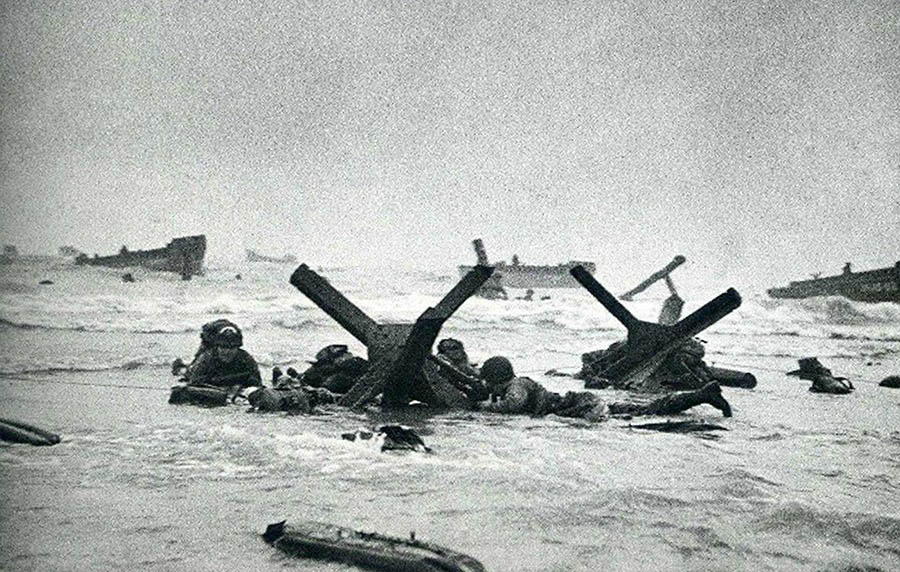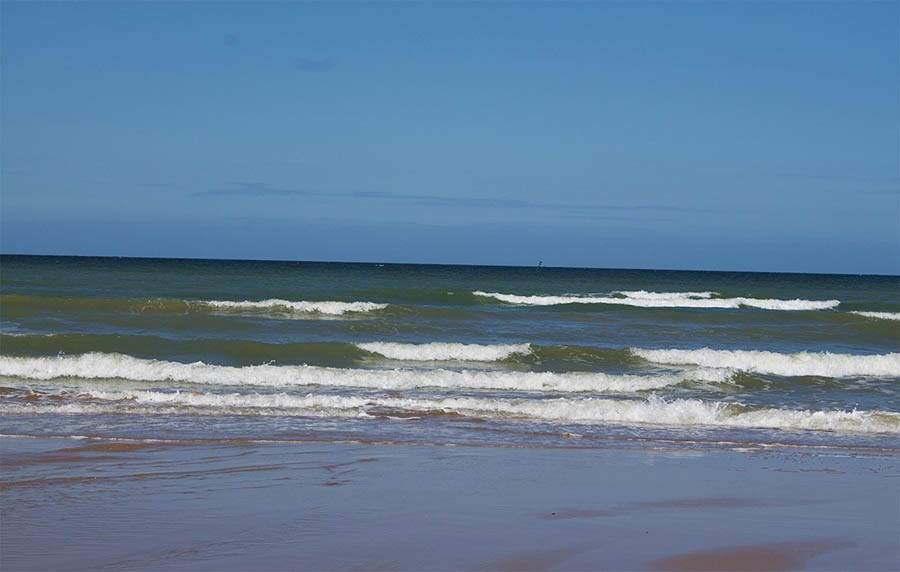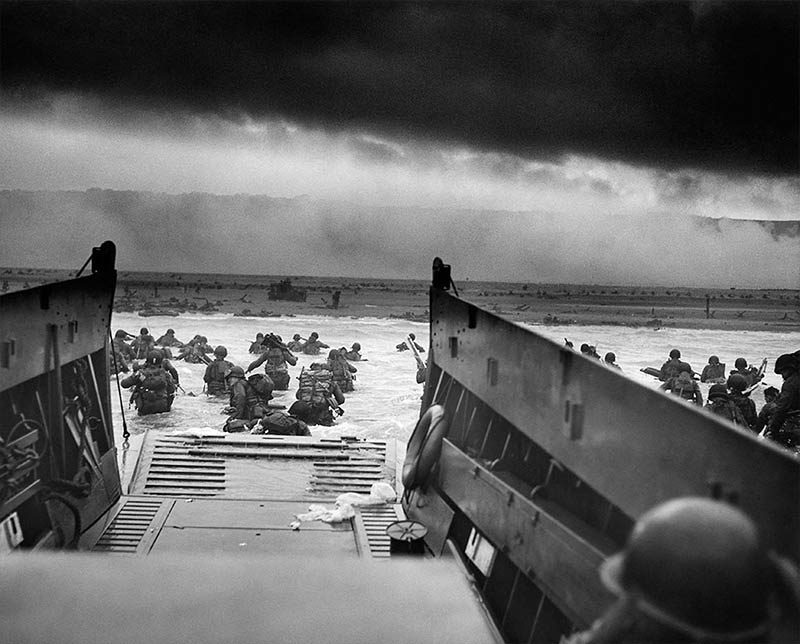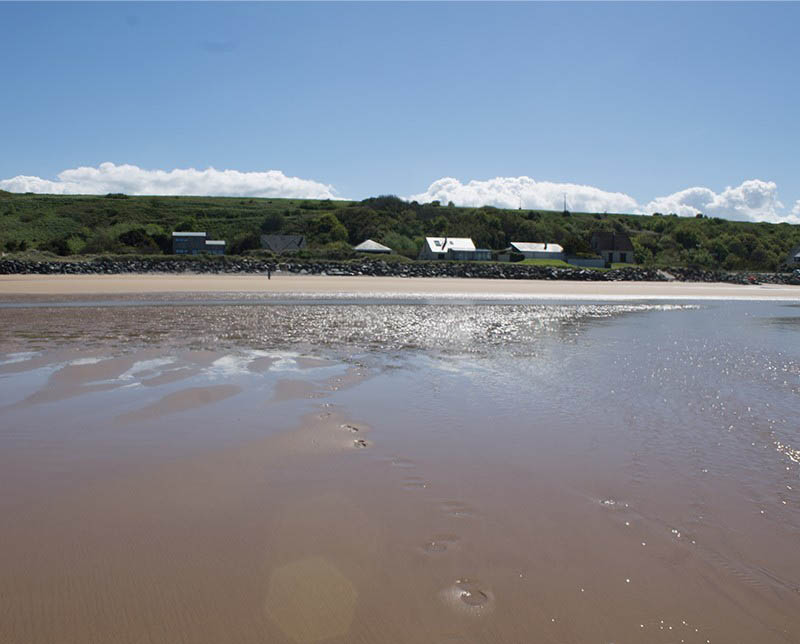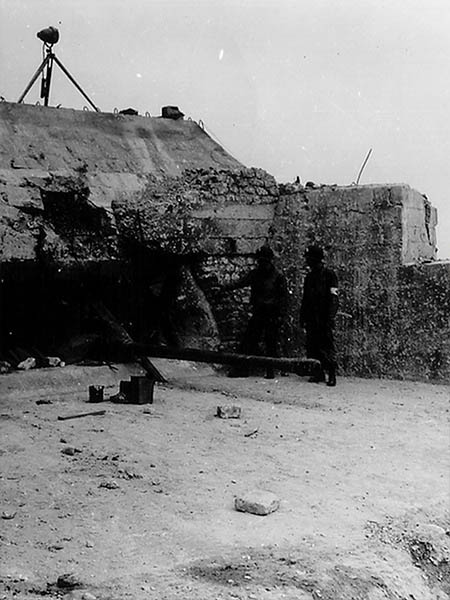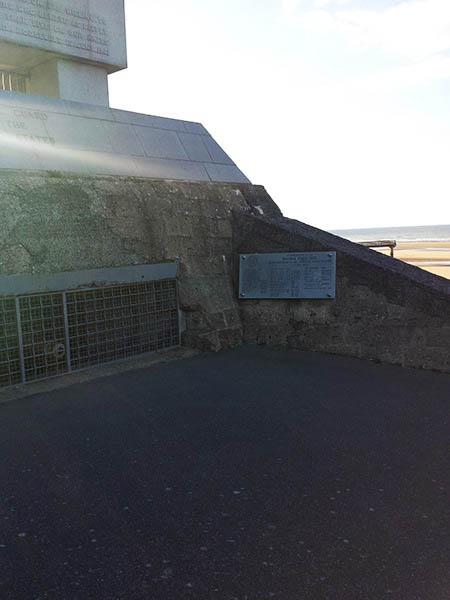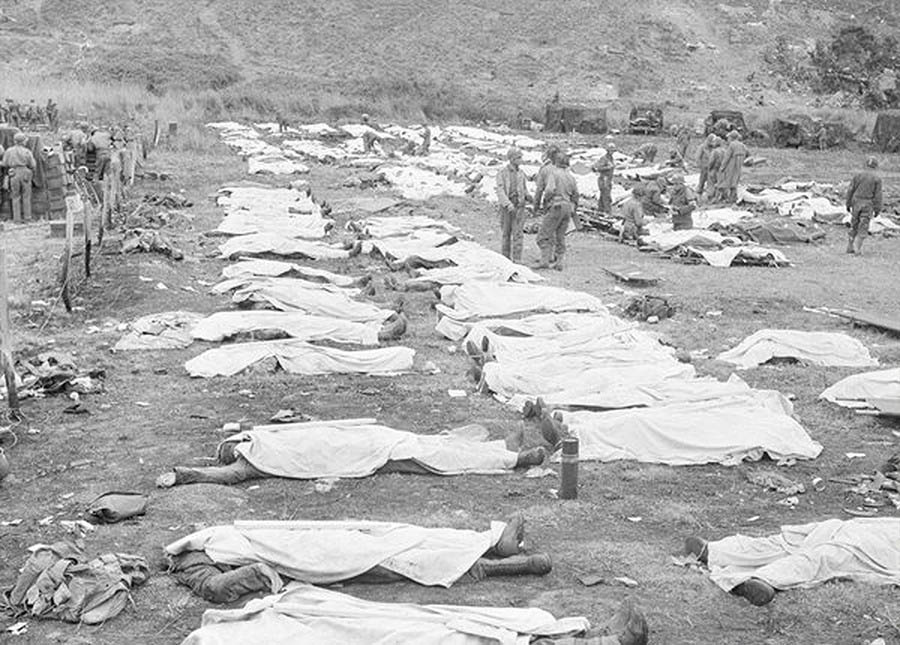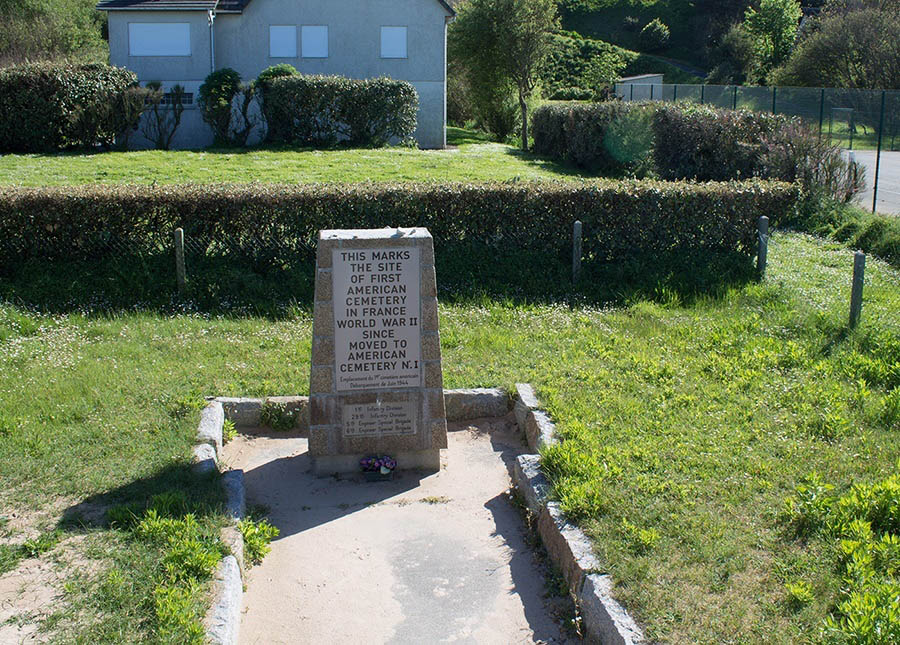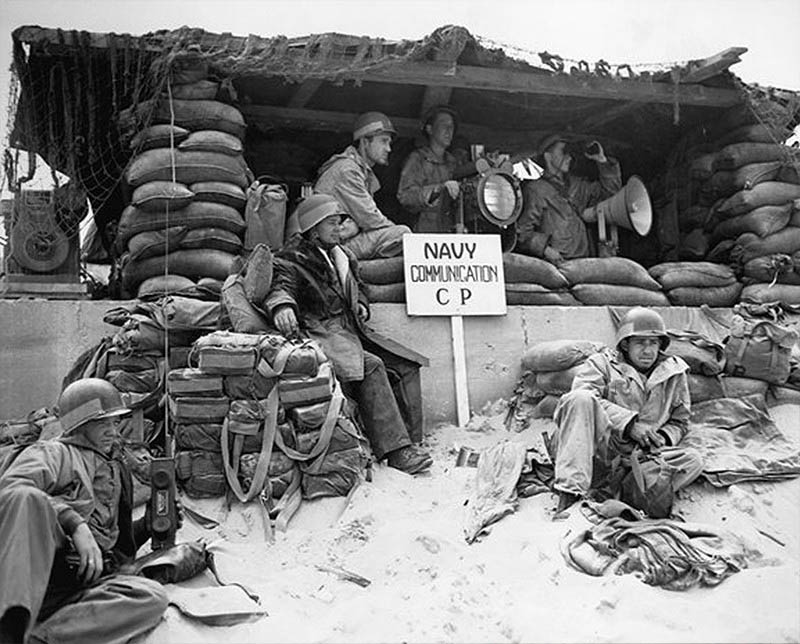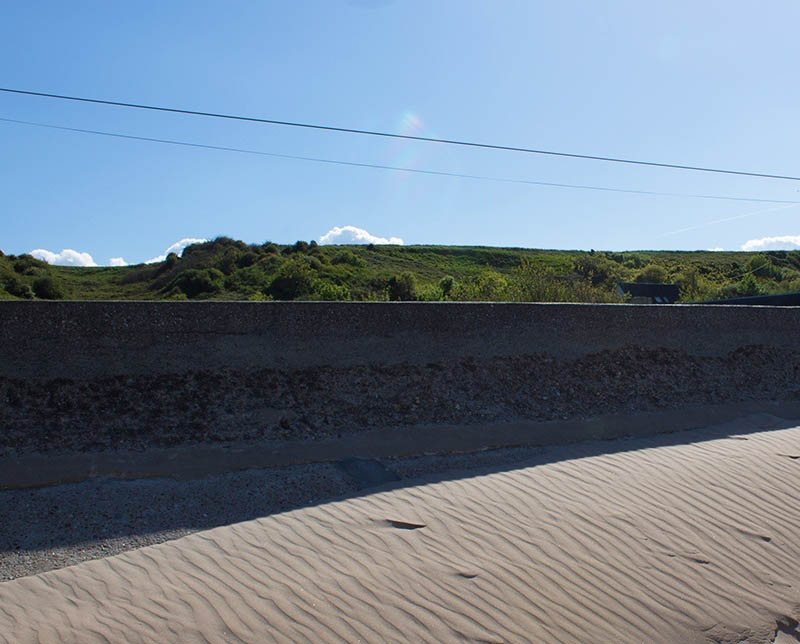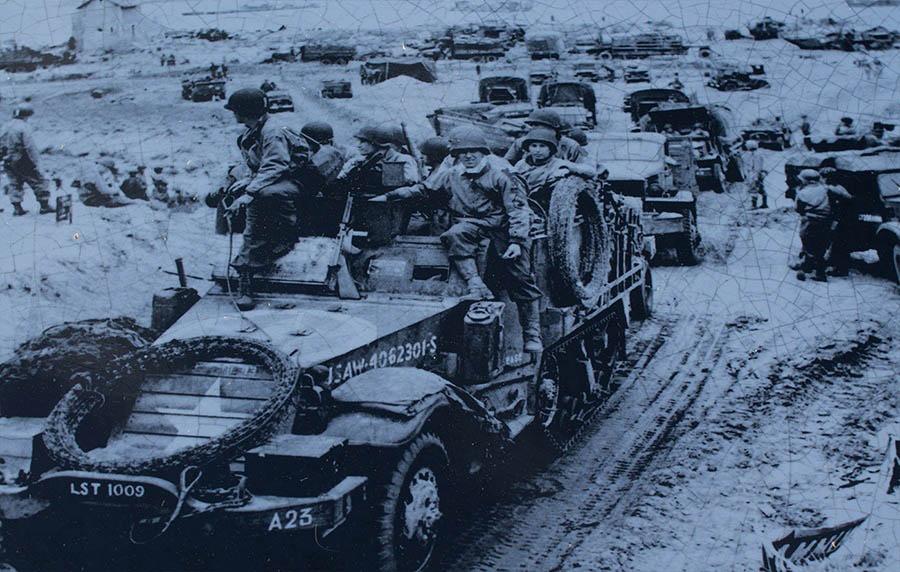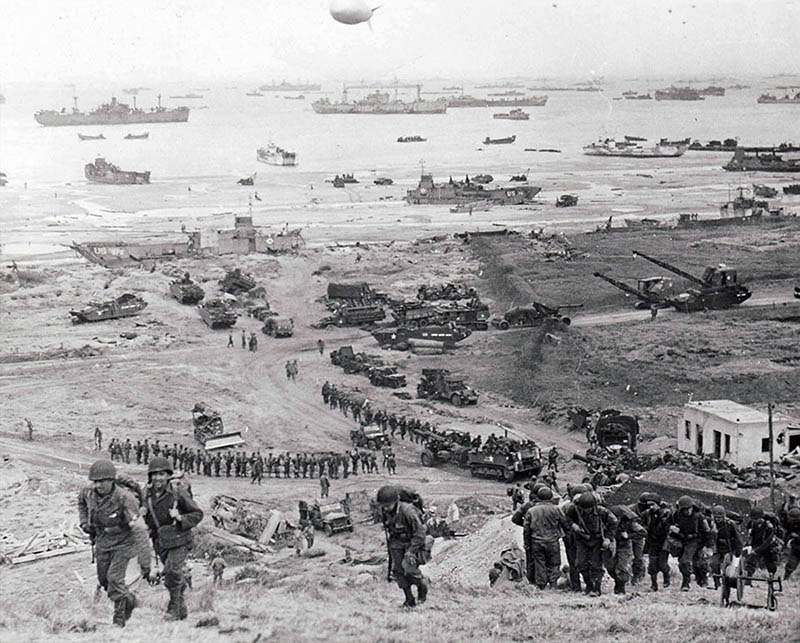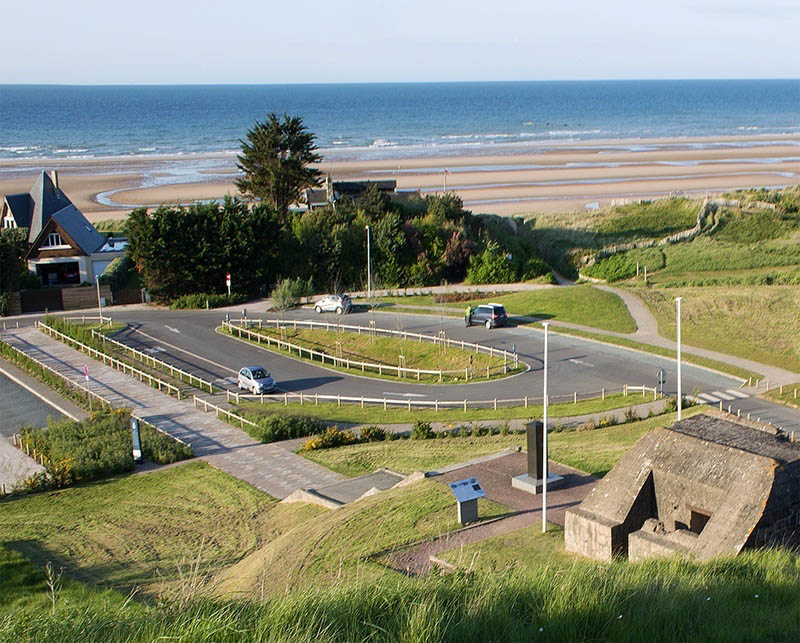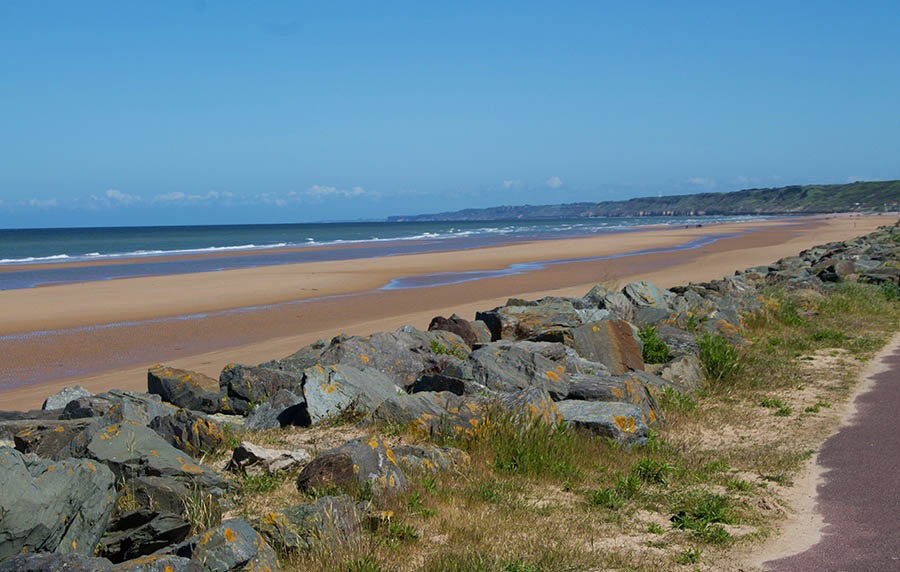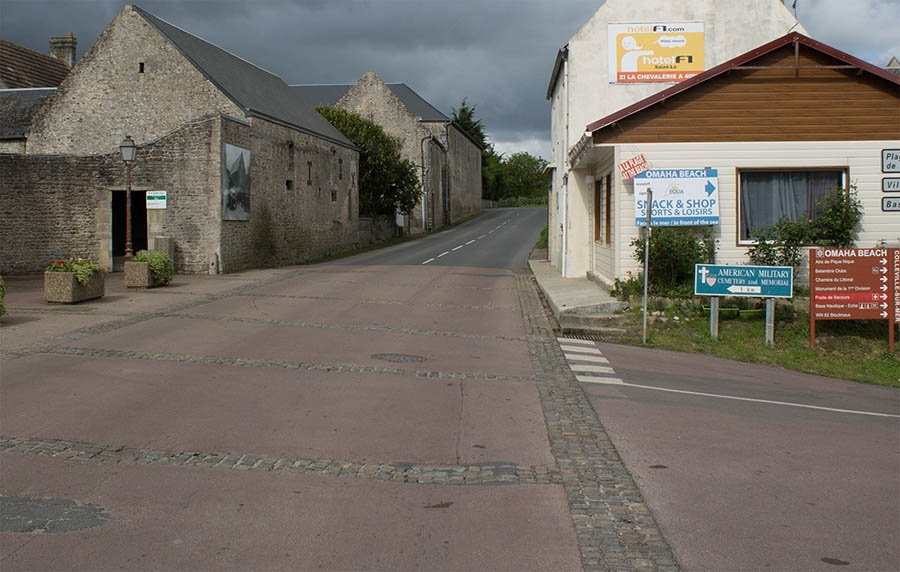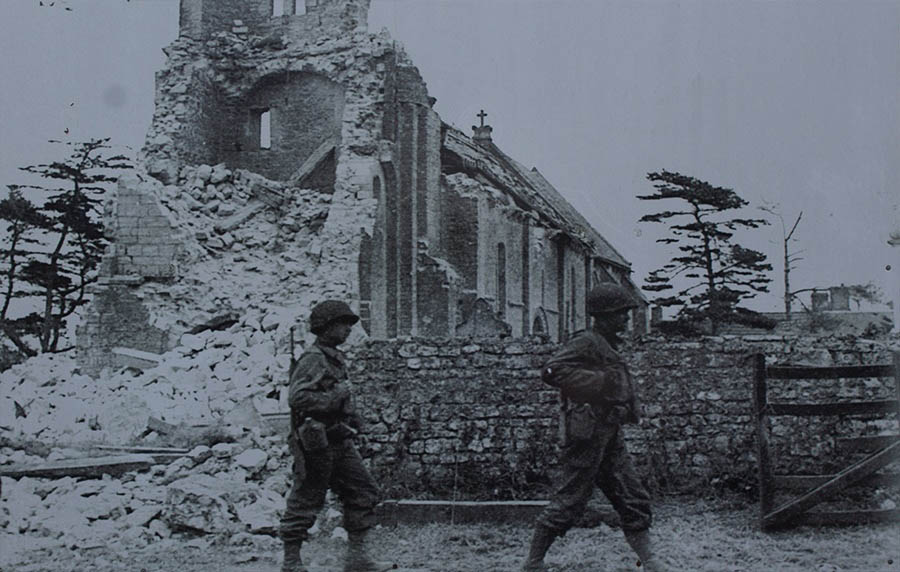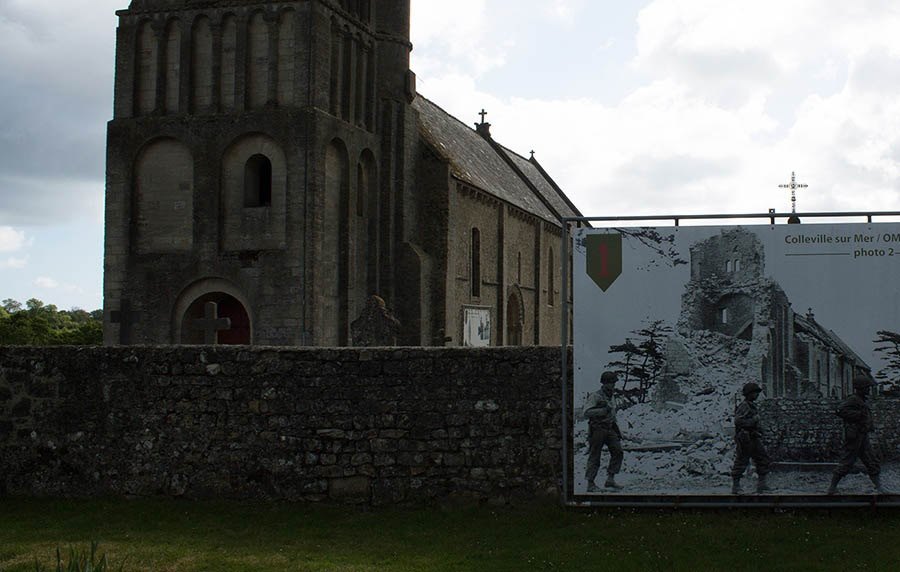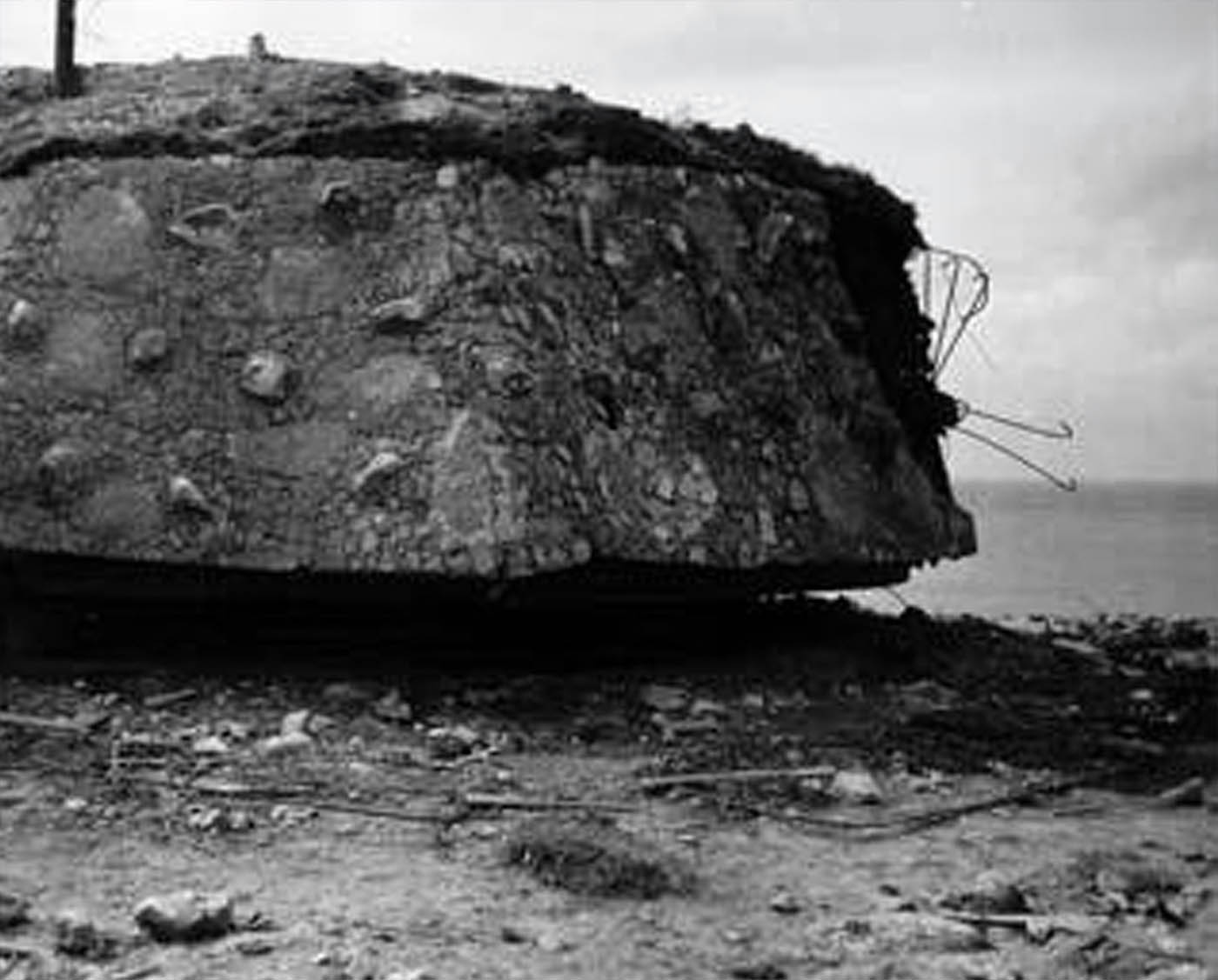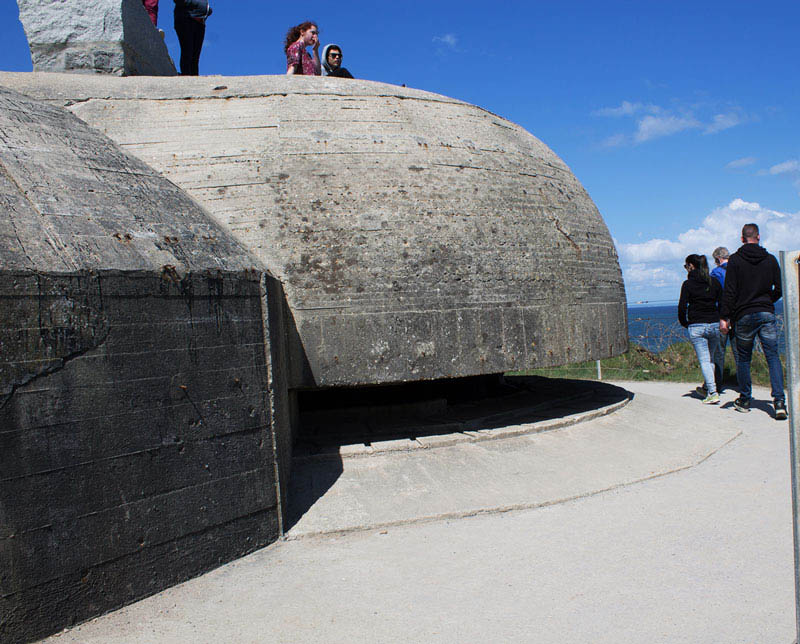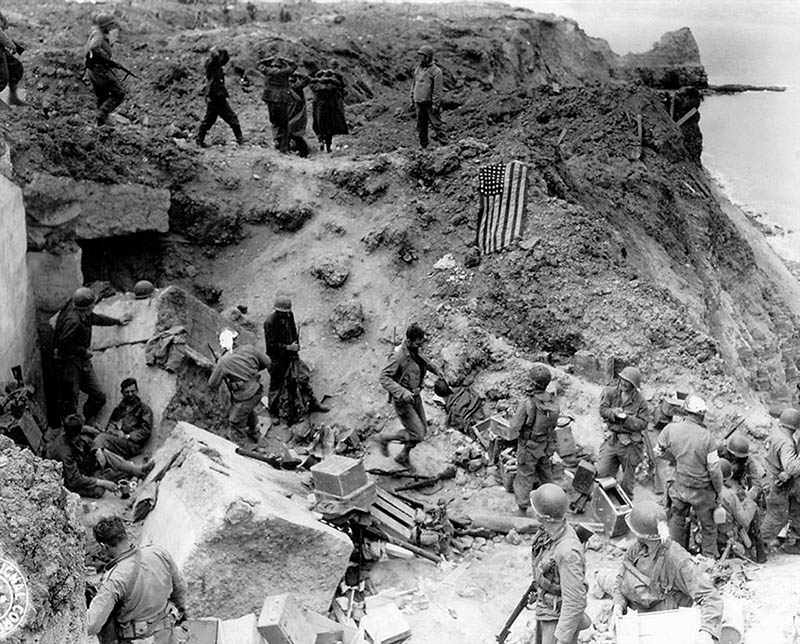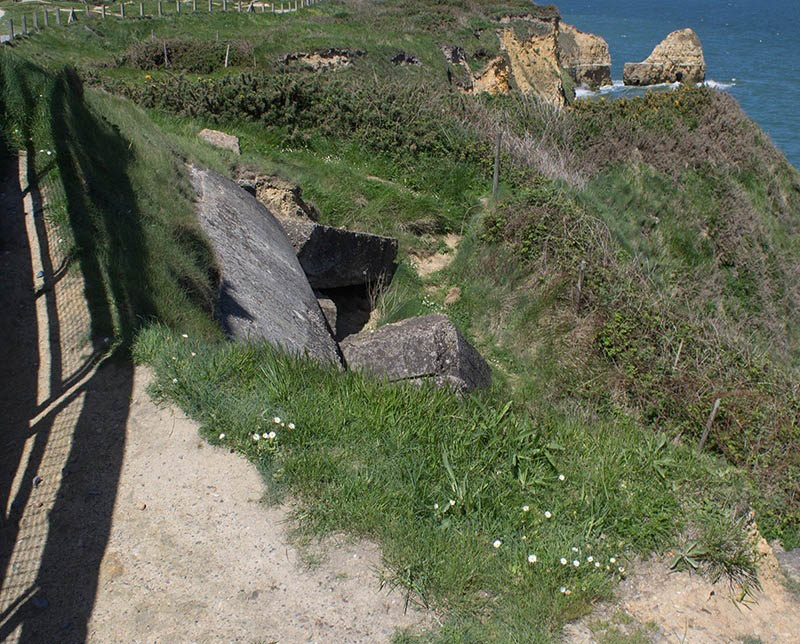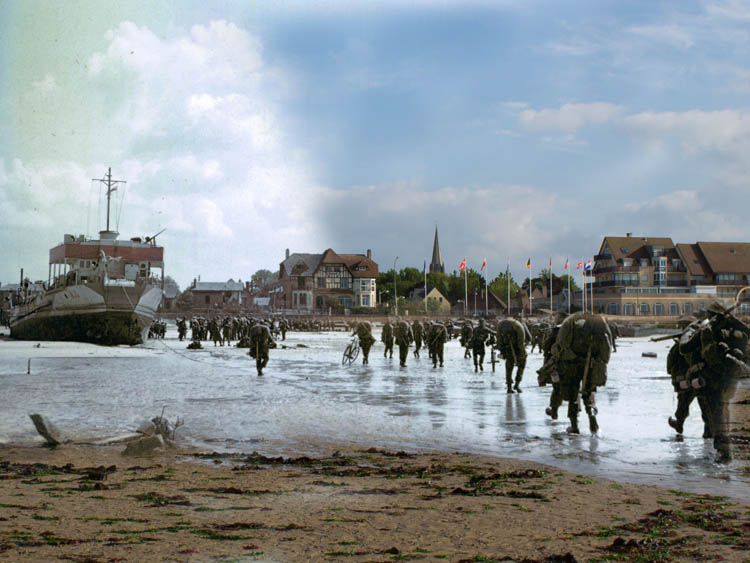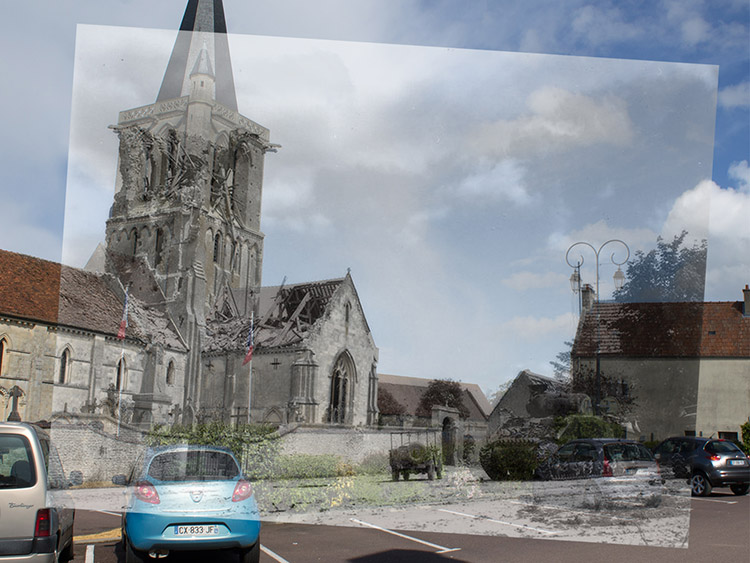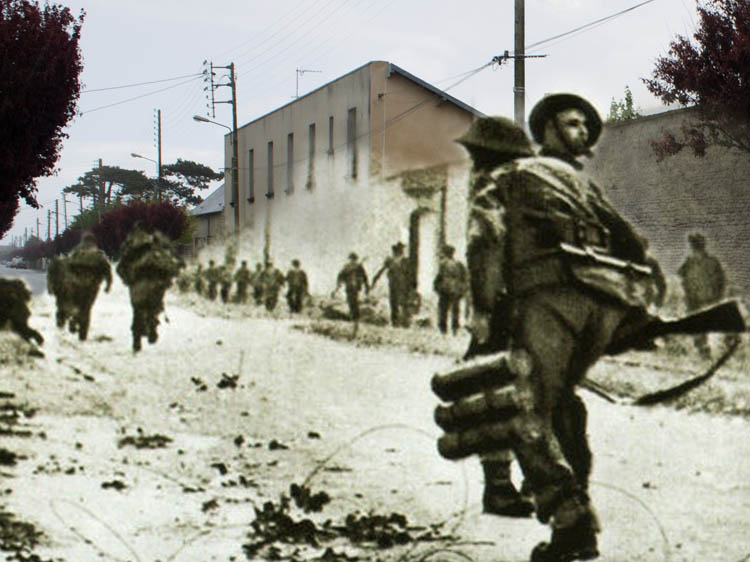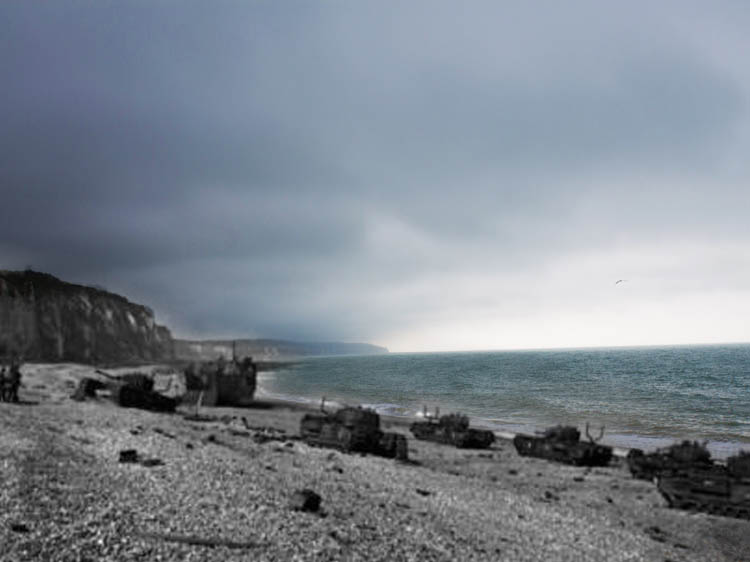Partner City
Omaha Beach
The Nearly Disastrous D-Day Landing
Robert Capa described his experience when he took these photos. "The flat bottom of our barge hit the earth of France," Capa remembered in his book Slightly Out of Focus. "The boatswain lowered the steel-covered barge front, and there, between the grotesque designs of steel obstacles sticking out of the water, was a thin line of land covered with smoke — our Europe, the 'Easy Red' beach. "My beautiful France looked sordid and uninviting, and a German machine gun, spitting bullets around the barge, fully spoiled my return. The men from my barge waded in the water. Waist-deep, with rifles ready to shoot, with the invasion obstacles and the smoking beach in the background gangplank to take my first real picture of the invasion. The boatswain, who was in an understandable hurry to get the hell out of there, mistook my picture-taking attitude for explicable hesitation, and helped me make up my mind with a well-aimed kick in the rear. The water was cold, and the beach still more than a hundred yards away. The bullets tore holes in the water around me, and I made for the nearest steel obstacle. A soldier got there at the same time, and for a few minutes we shared its cover. He took the waterproofing off his rifle and began to shoot without much aiming at the smoke-hidden beach. The sound of his rifle gave him enough courage to move forward, and he left the obstacle to me. It was a foot larger now, and I felt safe enough to take pictures of the other guys hiding just like I was." Capa was squeezing off photographs as he headed for a disabled American tank. He remembered feeling "a new kind of fear shaking my body from toe to hair, and twisting my face." With great difficulty his trembling hands reloaded his camera. All the while he repeated a sentence that he had picked up during the Spanish Civil War: "Es una cosa muy seria" ("This is a very serious business"). After what seemed an eternity, Capa turned away from the beach killing zone and spotted an incoming LCI (landing craft, infantry). He headed for it. "I did not think and I didn't decide it," he later wrote. "I just stood up and ran toward the boat. I knew that I was running away. I tried to turn but couldn't face the beach and told myself, 'I am just going to dry my hands on that boat.'" -The Magnificent Eleven: The D-Day photographs of Robert Capa on Skylighters Robert Capa took 106 photos in the first minutes of the Omaha Landings. He sent his film to the Life photolab in London where an overeager dark-room assistant accidentally ruined all but 11 of the photos. The 11 that survive are known as the "Magnificent Eleven."
Explore
Omaha Beach
Then and Now Photos
Storming Ashore
1944
Men from the 1st Division, the Big Red One, wade towards the shore. Soaked, seasick, covered in salt sprayed on them during hours in open landing craft, taking intense and accurate fire from machine guns, mortars and heavy artillery, it is difficult to imagine a more awful experience.
Sheltering Behind Obstacles
1944
Troops take cover behind beach obstacles. Tens of thousands of these stakes, sometimes called "Rommel's Asparagus", lined all the landing beaches and were designed to flip landing craft. Every third one was topped with a mine. The existence of these obstacles forced the Allies to attempt the landings at low tide, meaning assault troops had to cross open beaches which were carefully prepared killing zones.
Sheltering Behind Obstacles (2)
1944
Men take cover in the surf as the landing craft that dropped them off turn around and return for another load. For these men there was nowhere to retreat. The only path was forward.
Into the Jaws of Death
1944
A shot taken by a Coast Guard photographer titled "Into the Jaws of Death". I was not able to wade into the surf to get the correct distance from the bluffs, though this gives one an idea of the beach that had to be crossed.
Vierville Bunker
1944
This is an anti-tank gun bunker in front of Vierville, at the western end of the beach. The men from Able Company landed in front of this bunker. The gunners were credited with destroying a number of American tanks on the beaches before being neutralized by a shell fired directly into the embrasure, which was essentially the only way to knock out the positions. Note the impact mark above the embrasure. Today it serves as the National Guard Memorial.
GIs Awaiting Burial
1944
Americans killed on the beach have been collected and are awaiting burial.
Navy Command Post
1944
A Navy communications command post has been set up on the seawall to coordinate further landings in the hours after the beach was cleared.
Halftrack Driving Inland
1944
A halftrack drives through the beach exit in Easy Red sector, the first draw to fall to the Americans.
View of Invasion Fleet
1944
American troops advance inland through the Easy Red draw, below them is a knocked out German anti-tank bunker. There are German bunkers still in place all along the bluffs on the edge of farmers fields that have been overgrown by thick brush.
Americans in Colleville
1944
In the days after D-Day American equipment presses inland through the town of Colleville, just behind the beach. This is part of a series of photos hung throughout the town to commemorate liberation by the Americans.
Greeting Their Liberators
1944
French civilians turn out to greet American troops pushing inland.
Passing Damaged Church
1944
GIs file past the ruined church at Colleville. The ubiquitous churches in Normandy offered the best vantage points for German artillery spotters and snipers, and soon the Allies learned to destroy the tall steeples as a matter of course.
Observation Bunker
1944
The observation bunker at Pointe du Hoc has been restored.
Several kilometres west of Omaha Beach is Pointe du Hoc. Atop sheer 90 foot cliffs overlooking the ocean the Germans had emplaced a heavy coastal artillery battery that could potentially wreak havoc on the fleets steaming towards Omaha and Utah. The decision was taken to neutralize the guns by a daring assault by American Rangers, who would scale the cliffs and seize the positions. On the morning of June 6, 225 Rangers launched grappling hooks up the cliffs, and in the face of heavy German fire, scaled the cliffs and seized the bunkers, only to find that the guns had already been moved inland.
For the next two days the Rangers awaited relief from the forces at Omaha Beach, all the while fending off ferocious German counterattacks. When the main invasion force finally linked up with the beleagured Rangers, only 90 of the original 225 men were still standing. Remarkably, after the war the battlefield was left as it was and the land was gifted to the United States by France. All the crumbling German bunkers and deep craters from the bombardment remain there today
Temporary US HQ
1944
Colonel Rudder's temporary headquarters set up beside the blasted remnants of a German anti-aircraft bunker at Pointe Du Hoc on D-Day+2. I'm about five feet off from the right perspective, a fence was preventing me from getting any closer.

